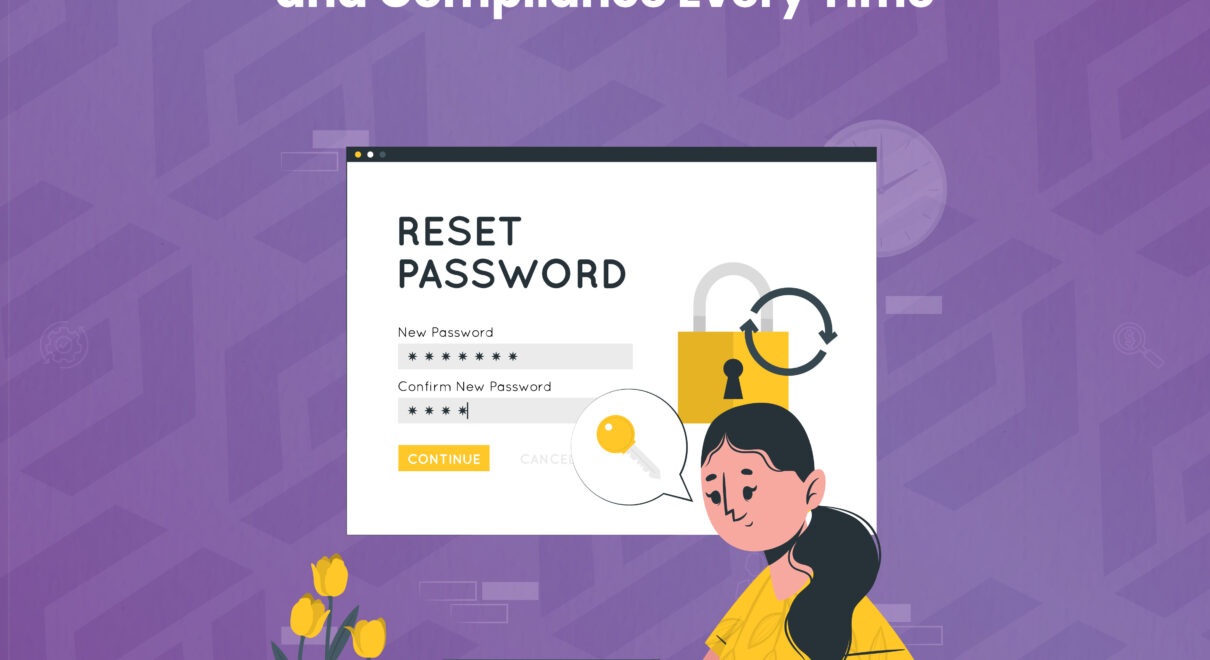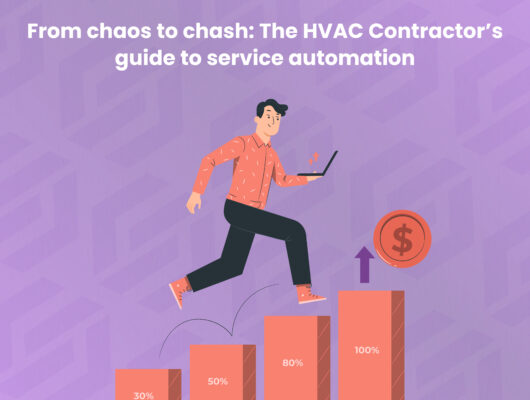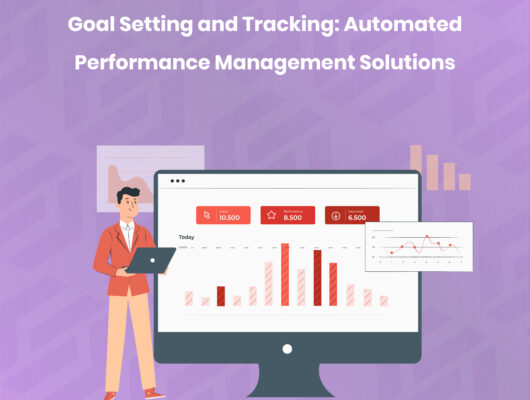When David, a senior software engineer, submitted his resignation on Tuesday morning, the security implications were immediate and critical. He had access to customer databases, proprietary code repositories, administrative systems, and confidential client information. His company badge could open secure areas, his laptop contained sensitive files, and his knowledge of system vulnerabilities made him a significant security risk if not properly managed.
In most organizations, David’s departure would trigger a chaotic scramble: HR frantically emailing IT about access revocation, managers trying to remember what equipment he had, accounting wondering about final expense reports, and security hoping someone remembered to collect his badge. Critical steps would be missed, accounts would remain active for weeks, and the company would remain exposed to data breaches and compliance violations.
The statistics on manual offboarding failures are alarming:
- 68% of organizations have experienced security incidents due to improper employee departures
- 47% of former employees retain access to corporate systems for weeks or months after departure
- Average time to revoke all access: 2-4 weeks in manual processes
- Cost of security breaches from former employee access: $150,000-$2.8 million per incident
- Compliance violations occur in 34% of manual offboardings due to incomplete documentation
But companies implementing automated offboarding processes report dramatically different outcomes: 96% reduction in security incidents, 24-hour complete access revocation, 100% compliance documentation, and 78% reduction in IT administrative burden.
The question isn’t whether to automate offboarding—it’s whether you can afford the security and compliance risks of manual processes.
The Hidden Dangers of Manual Offboarding
Security Vulnerabilities in Traditional Processes
Access Management Chaos: Manual offboarding creates critical security gaps that cybercriminals actively exploit:
- Orphaned accounts remain active across multiple systems with full privileges
- Shared credentials continue working long after employee departures
- VPN access stays operational, providing external network entry points
- Cloud service accounts remain accessible through personal devices and saved passwords
- Administrative privileges persist in critical business systems
Physical Security Risks:
- Unreturned access cards and key fobs that can be used or duplicated
- Equipment retention including laptops with cached credentials and sensitive data
- Office access through unreturned keys or unchanged access codes
- Parking permissions and building access that remain active
Data Exposure Vulnerabilities:
- Email account access with years of confidential communications
- File share permissions to proprietary documents and client information
- Customer data access through CRM and database systems
- Financial system access with ability to view or manipulate sensitive information
Compliance Nightmare Scenarios
Regulatory Violation Risks: Different industries face specific compliance challenges when offboarding is mismanaged:
Healthcare (HIPAA):
- Former employees with continued access to patient records
- Unreturned devices containing protected health information
- Incomplete audit trails of access revocation and data handling
- Missing documentation of final PHI inventory and destruction
Financial Services (SOX, GLBA):
- Ongoing access to customer financial data and trading systems
- Retained administrative privileges in audit-critical systems
- Incomplete documentation of control changes and access modifications
- Missing separation of duties verification after role transitions
Technology (SOC 2, ISO 27001):
- Active developer access to production systems and code repositories
- Unreturned devices with customer data and intellectual property
- Incomplete access logging and monitoring system updates
- Missing security awareness and data handling confirmations
The Operational Chaos of Manual Processes
Inconsistent Execution: Manual offboarding processes suffer from human error and inconsistent application:
- Checklist failures where critical steps are missed or forgotten
- Communication breakdowns between HR, IT, and department managers
- Timeline confusion with unclear responsibility assignments and deadlines
- Documentation gaps that create audit vulnerabilities and compliance risks
Resource Drain:
- IT administrator time: 4-8 hours per departure for access revocation across systems
- HR coordination effort: 6-10 hours managing stakeholder communications and documentation
- Manager involvement: 3-5 hours for equipment collection and knowledge transfer oversight
- Security team verification: 2-4 hours confirming complete access removal and system integrity
Knowledge Loss:
- Undocumented processes and institutional knowledge that disappears with departing employees
- Incomplete handovers that leave projects and responsibilities in limbo
- Client relationship gaps where departing employees take relationship knowledge with them
- Technical debt from systems and customizations known only to departing team members
Automated Offboarding: The Complete Security Solution
Automated offboarding transforms employee departures from security vulnerabilities into systematically managed, compliant processes that protect organizational assets while ensuring smooth business continuity.
Core Components of Automated Offboarding
1. Trigger-Based Process Initiation Automated systems immediately initiate comprehensive offboarding workflows when:
- Resignation notices are submitted through HR systems
- Termination decisions are recorded by managers or HR personnel
- Contract expiration dates approach for temporary or contract employees
- Role changes require access modifications or privilege adjustments
2. Intelligent Access Inventory and Mapping Advanced systems automatically catalog and map all employee access across:
- Identity management systems with comprehensive account listings
- Application access including cloud services, business applications, and specialized tools
- Network resources such as VPN access, wireless networks, and shared drives
- Physical access including badges, keys, parking permits, and facility access codes
3. Risk-Based Prioritization AI-powered systems assess departure risk and prioritize access revocation based on:
- Data sensitivity levels and access to confidential information
- Administrative privileges and ability to modify system configurations
- Customer access and potential for client relationship disruption
- Departure circumstances including voluntary resignation vs. involuntary termination
4. Automated Access Revocation Sophisticated integration capabilities enable simultaneous access removal across:
- Active Directory and identity management systems
- Cloud platforms including Office 365, Google Workspace, and AWS
- Business applications such as CRM, ERP, and specialized industry tools
- Security systems including VPN access, multifactor authentication, and certificate management
5. Compliance Documentation and Audit Trails Comprehensive tracking and documentation including:
- Timestamped access revocation with detailed logs of when and how access was removed
- Equipment inventory with detailed tracking of returned and outstanding items
- Knowledge transfer verification confirming completion of handover processes
- Final certification with manager and IT sign-off on complete offboarding
Technology Stack for Automated Offboarding
Identity and Access Management Integration
Enterprise Identity Platforms:
- Microsoft Active Directory integration for centralized account management and policy enforcement
- Okta or Azure AD for cloud-based identity management with sophisticated access controls
- SailPoint or CyberArk for privileged access management and administrative account oversight
- LDAP and SAML integration for legacy system connectivity and federated authentication management
Advanced Access Management:
- Just-in-time access systems that automatically expire privileges based on employment status
- Privileged access management with session recording and administrative activity monitoring
- Certificate management including automatic revocation of digital certificates and encryption keys
- API access management for microservices, cloud platforms, and third-party integrations
Security and Monitoring Systems
Security Information and Event Management (SIEM):
- Splunk or IBM QRadar for comprehensive security event monitoring and threat detection
- Real-time alerting for suspicious access attempts or unusual activity patterns
- Automated incident response with playbooks for security events related to departing employees
- Forensic capability for investigating potential security incidents or data breaches
Endpoint Detection and Response (EDR):
- CrowdStrike or Carbon Black for comprehensive endpoint monitoring and threat hunting
- Remote device isolation capabilities for immediate quarantine of compromised or stolen devices
- Data loss prevention monitoring for unauthorized file transfers or data exfiltration attempts
- Behavioral analysis detecting anomalous user behavior patterns indicating potential insider threats
Business Application Integration
Enterprise Resource Planning (ERP):
- SAP or Oracle integration for comprehensive business process and access management
- Financial system coordination including accounts payable, purchasing, and budget access
- Supply chain management access control for vendor relationships and procurement systems
- Human capital management integration for payroll, benefits, and compliance coordination
Customer Relationship Management (CRM):
- Salesforce or HubSpot integration for customer data protection and relationship transfer
- Lead and opportunity reassignment with automated workflow and notification systems
- Customer communication management including email templates and transition coordination
- Sales territory management with automatic redistribution of accounts and responsibilities
Implementation Strategy: Building Your Automated Offboarding System
Phase 1: Risk Assessment and Current State Analysis (Weeks 1-4)
Security Vulnerability Assessment:
- Access inventory audit cataloging all systems, applications, and resources accessible to employees
- Privilege escalation analysis identifying roles with administrative or sensitive data access
- Third-party system mapping documenting vendor platforms and partner system integrations
- Compliance requirement documentation outlining regulatory obligations for employee departures
Process Documentation and Gap Analysis:
- Current offboarding workflow mapping documenting existing procedures and responsible parties
- Stakeholder responsibility identification clarifying roles for HR, IT, security, and department managers
- Timeline analysis measuring current offboarding completion rates and identifying bottlenecks
- Compliance gap assessment identifying areas where current processes fail to meet regulatory requirements
Phase 2: Platform Selection and Architecture Design (Weeks 5-8)
Solution Architecture Development:
- Integration mapping designing connections between offboarding platform and existing business systems
- Workflow design creating automated processes for different departure scenarios and risk levels
- Security framework establishment implementing appropriate access controls and audit logging
- Compliance framework integration ensuring all regulatory requirements are addressed in automated processes
Technology Platform Selection:
- Identity management platform evaluation comparing solutions for centralized access control and automation
- Workflow automation tool selection choosing platforms for business process orchestration and stakeholder coordination
- Security monitoring integration connecting offboarding processes with existing security tools and alert systems
- Compliance documentation system implementing platforms for audit trail creation and regulatory reporting
Phase 3: Development and Integration (Weeks 9-16)
System Integration Development:
- API integration implementation connecting offboarding platform with existing business applications
- Custom connector development for proprietary systems and specialized business applications
- Data synchronization setup ensuring accurate and timely information flow between systems
- Error handling and exception management creating processes for addressing integration failures
Workflow Automation Configuration:
- Departure trigger setup configuring automatic initiation based on HR system events
- Risk-based workflow creation developing different processes based on departure circumstances and role sensitivity
- Stakeholder notification automation implementing alerts and task assignments for relevant parties
- Compliance checkpoint integration ensuring regulatory requirements are embedded in automated processes
Phase 4: Testing and Full Deployment (Weeks 17-24)
Comprehensive Testing Program:
- Functional testing verifying all automated workflows operate correctly under various scenarios
- Integration testing confirming seamless data flow and process coordination across all connected systems
- Security testing validating access revocation completeness and monitoring system effectiveness
- Compliance testing ensuring all regulatory requirements are met and properly documented
Organization-Wide Rollout:
- Phased deployment schedule gradually expanding automated offboarding across all departments and roles
- Training delivery providing comprehensive education for HR teams, managers, and IT personnel
- Support infrastructure activation implementing help desk capabilities and user assistance programs
- Performance monitoring tracking key metrics and identifying optimization opportunities
Measuring Automated Offboarding Success
Security and Risk Metrics
Access Management Effectiveness:
- Complete access revocation time: Target of 24 hours or less for all systems
- Orphaned account elimination: Zero accounts remaining active after offboarding completion
- Security incident reduction: Percentage decrease in incidents related to former employee access
- Privileged access management: Time to revoke administrative privileges and sensitive system access
Risk Mitigation Measurement:
- Data breach prevention: Elimination of security incidents caused by former employee access
- Compliance violation reduction: Decrease in regulatory violations related to employee departures
- Audit readiness: Time required to compile complete offboarding documentation for compliance reviews
- Incident response effectiveness: Speed and completeness of response to high-risk departure scenarios
Operational Efficiency Metrics
Process Automation:
- Manual task elimination: Percentage of offboarding steps completed automatically without human intervention
- Stakeholder time savings: Reduction in hours spent by HR, IT, and managers on offboarding tasks
- Error reduction: Decrease in missed steps, incomplete processes, and compliance documentation gaps
- Consistency improvement: Standardization of offboarding experience across all departments and role types
Business Impact:
- Knowledge transfer success: Percentage of projects successfully transferred to successor employees
- Client relationship preservation: Retention rates for customer relationships after employee departures
- Regulatory adherence: 100% completion of required compliance documentation and reporting
- Legal risk mitigation: Reduction in employment-related legal issues and disputes
The Future of Automated Offboarding
Emerging Technologies and Capabilities
Artificial Intelligence and Machine Learning:
- Predictive risk assessment: AI models that identify potential security risks based on employee behavior patterns
- Intelligent automation: Machine learning systems that adapt offboarding processes based on role, risk level, and departure circumstances
- Anomaly detection: Advanced analytics identifying unusual access patterns or potential insider threat indicators
- Natural language processing: Automated analysis of resignation letters and exit interviews for risk indicators
Blockchain and Distributed Systems:
- Immutable audit trails: Blockchain-based systems providing tamper-proof records of all offboarding activities
- Smart contracts: Automated execution of offboarding steps based on predefined triggers and conditions
- Decentralized identity management: Employee-controlled digital identity systems that automatically revoke access upon departure
- Consensus-based verification: Multiple system verification of complete access revocation and compliance
Taking Action: Your Offboarding Security Transformation
The security and compliance risks of manual offboarding processes are no longer acceptable in today’s threat landscape. Every day without automated offboarding exposes your organization to data breaches, regulatory violations, and operational disruptions that could have been prevented.
Immediate Risk Assessment Actions:
- Audit Your Last 10 Departures: Review how long access remained active and what security gaps existed
- Map Your System Access: Catalog all systems, applications, and resources that employees can access
- Calculate Your Risk Exposure: Estimate potential costs of security incidents from improper offboarding
- Review Compliance Requirements: Understand regulatory obligations for employee departure documentation
Ready to Eliminate Offboarding Security Risks?
Automated offboarding isn’t just about efficiency—it’s about protecting your organization from the significant security and compliance risks that manual processes create. The technology exists today to transform your most vulnerable security process into a systematically managed, compliant procedure.
Ready to secure your organization with automated offboarding? Our security automation specialists have helped hundreds of companies eliminate offboarding risks, delivering measurable improvements in security posture, compliance adherence, and operational efficiency.






1 Comment